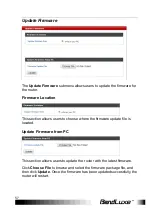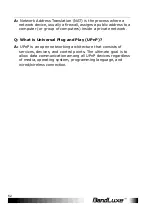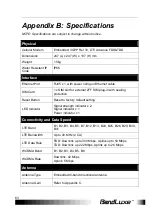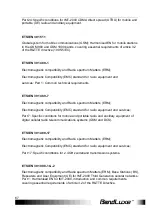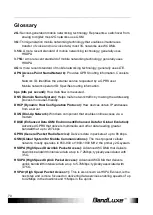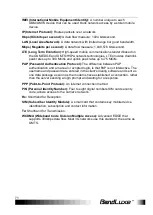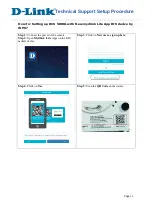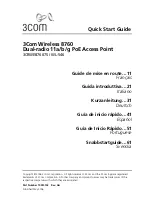
Appendix C: Important Safety Information and Glossary
71
IMEI (International Mobile Equipment Identity):
A number unique to each
GSM/UMTS device that can be used block network access by a stolen mobile
device.
IP (Internet Protocol):
Routes packets over a network.
Kbps (Kilobits per second):
A data flow measure; 1024 bits/second.
LAN (Local Area Network):
A data network with limited range but good bandwidth.
Mbps (Megabits per second):
A data flow measure; 1,048,576 bits/second.
LTE (Long Term Evolution):
High-speed mobile communication standard based on
the GSM/EDGE and UMTS/HSPA network technologies. LTE provides downlink
peak rates up to 300 Mbit/s and uplink peak rates up to 75 Mbit/s.
PAP (Password Authentication Protocol):
The difference between PAP
authentication and a manual or scripted login, is that PAP is not interactive. The
username and password are entered in the client's dialing software and sent as
one data package as soon as the modems have established a connection, rather
than the server sending a login prompt and waiting for a response.
PPP (Point-to-Point Protocol):
An internet connection method.
PIN (Personal Identity Number):
Four to eight digital numbers SIM card security
code; allows access to the carrier’s network.
Rx:
Shorthand for Reception.
SIM (Subscriber Identity Module):
A small card that contains key mobile device
identification, subscription and contact information.
Tx:
Shorthand for Transmission.
WCDMA (Wideband Code Division Multiple Access):
Advanced EDGE that
supports 384kbps data flow. Most 3G networks use this standard, the same as
UMTS.

